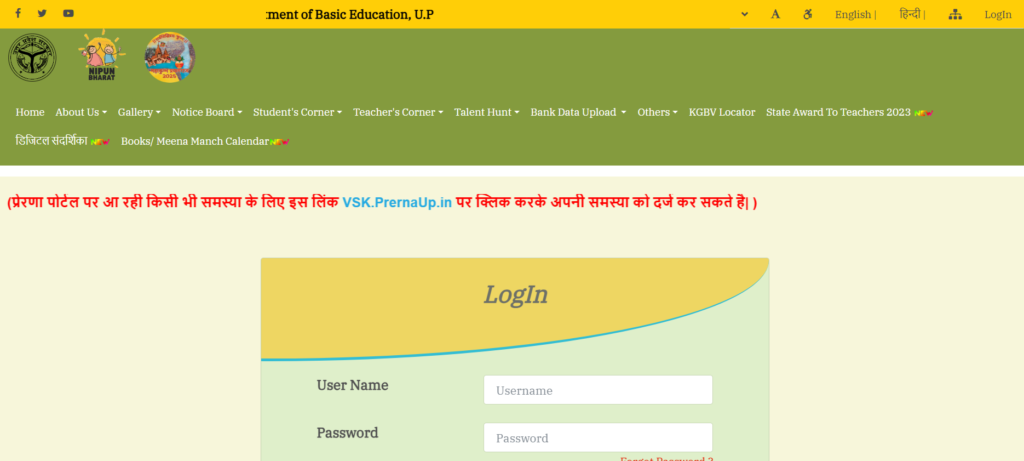
India is an agrarian economy and relies heavily on its farmers for food security and rural employment. Over the years, there have been numerous programs set up to enhance the farming ecosystem, from irrigation schemes to fertilizer subsidies. But one issue has remained constant misuse of chemical fertilizers. With a view to resolving this, the government introduced the unique concept of the PM PRANAM Scheme. In this article, you can read all about the PM PRANAM Scheme – full form, objectives, how the ministry is involved in it and its impact on the environment and economy.
PM PRANAM Scheme Overview
| Particulars | Details |
| Full Name of the Scheme | PM Promotion of Alternate Nutrients for Agriculture Management Yojana |
| Short Name | PM PRANAM Scheme |
| Launched By | Government of India |
| Implemented By | Ministry of Chemicals and Fertilizers |
| Department Responsible | Department of Fertilizers |
| Main Objective | To reduce the use of chemical fertilizers and promote alternative, eco-friendly nutrients |
| Launch Purpose | Encourage states and farmers to adopt sustainable farming methods and reduce the subsidy burden |
| Beneficiaries | Farmers, State Governments, Agricultural Ecosystem |
| Incentive Model | States receive financial incentives for reducing chemical fertilizer consumption |
| Incentive Utilization | 70% for promoting alternative fertilizers, awareness programs, and capacity building |
| Key Components | Promotion of bio-fertilizers, nano-fertilizers, and organic nutrients |
| Expected Outcomes | Improved soil health, reduced pollution, balanced nutrient management, and cost savings |
| Relevance for UPSC | Environment, Agriculture, Economy, and Governance sections (GS Paper 2 & 3) |
| Associated Sectors | Agriculture, Environment, Rural Development |
| Long-Term Goal | Sustainable agriculture and environmental conservation |
| Tagline Essence | A step towards green and balanced farming for future generations |
What is the PM PRANAM Scheme?
The PM PRANAM Scheme (PM Promotion of Alternative Nutrients for Agriculture Management Yojana) is an initiative by the government to promote sustainable farming among states and farmers. The emphasis of the scheme would be lessening dependency on chemical fertilisers, which are damaging for soil health, water quality and to environment in the long run.
It indicates the commitment of the government to balance nutrient management, so that agricultural productivity is sustained and the environment is preserved.
PM PRANAM Scheme Full Form
The full form of the PM PRANAM Scheme is “PM Promotion of Alternate Nutrients for Agriculture Management.”
That title itself hints at the core of the initiative, popularizing technology that can be used as a substitute for nutrients and reduce chemical fertilizers. The name of the scheme, “PRANAM,” in an equally symbolic manner expresses gratitude to the environment, soil, and nature, which have produced food and led to this agricultural productivity.
Goals of the PM PRANAM Scheme
PM PRANAM Scheme is based on the multi-dimensional strategy of tackling issues related to the agricultural sector and encouraging eco-friendly practices. Its primary objectives include:
- Less use of chemicals as fertilizers: The program is designed to reduce the overuse of fertilizers, which has depleted soil health.
- Encouraging alternative nutrients: Advocating bio-fertilizers, nano-fertilizers and organic nutrients as sustainable alternatives for the farmers.
- Improving soil fertility: Healthy soil equates to better crop yields and sustainable agriculture for years to come.
- Reducing subsidy burden: The government could save thousands of crores every year on the subsidy bill by weaning away farmers from fertilizer dependency.
- Enhancing farmers’ income: 11.20 Natural farming for good crops and balanced nutrients should promote increasing production with decreased cost of cultivation.
- Protecting the environment: Less fertilizer runoff reduces water pollution and supports climate resilience.
PM PRANAM Scheme – Who is the Ministry for?
The scheme PM PRANAM is being executed through the M/o Chemicals & Fertilizers in association with the Department of Fertilizers. The plan is a part of the larger mission to ensure sustainable agriculture and nutrient balance for the entire nation.
The ministry, besides state governments, fertilizer companies and the agriculture department, is coordinating to make this work a grand success.
Also Read: Joseph Mundassery Scholarship | NPCI Aadhaar Link Bank Account
How is the PM PRANAM Scheme Operational?
The PM PRANAM model is structured based on the concept of performance-linked incentive. States that have reduced their chemical fertilizer consumption over the previous year are given financial incentives under the scheme.
Here is a closer look at how it works:
- Data Monitoring: The detailed information regarding the use of fertilizer in each village is recorded through IT-enabled infrastructure – such as computers at the State offices and web servers at the National level.
- Performance Evaluation: States that decreasing fertilizer application without adversely affecting yield gets a prize.
- Incentive Distribution: Some of the savings under the reduced fertiliser subsidy are distributed to the states as an incentive.
- Utilization of Funds: Seventy per cent of these incentives have to be used by states for the promotion of non-chemical fertilizers, awareness programmes and capacity building among farmers.
- Farmer Awareness Campaigns: Farmer training and workshops conducted: Farmers are imparted knowledge on the use of organic and bio-fertilizers; decreasing dependency on urea, DAP.
Why India Needs PM PRANAM Scheme
The PM PRANAM Scheme is not only important for agriculture, but a huge step towards environmental, economic and social sustainability. Here’s why it means so much:
- Environmental Protection: It reduces soil degradation and water contamination from the overuse of chemical fertilizers.
- Sustainable Agriculture: Promotes balanced nutrient management and long-term soil fertility.
- Economic Savings: Reduces the fertiliser subsidy outgo of the government by releasing funds for other developmental works.
- Farmer Empowerment: Aids farmers in switching to economical and eco-friendly farming methods.
- Global Commitments: Supports decentralized composting solutions, India’s climate goals & SDGs on responsible consumption and production.
PM PRANAM Scheme UPSC Relevance
For UPSC and other competitive exam aspirants, it is extremely important to have clarity on the PM PRANAM Scheme UPSC topic. It is a nexus of overlapping subjects, Environment, Agriculture, Economy and Governance.
This is how it may appear in the UPSC syllabus:
- GS Paper 3 (Environment and Ecology): Sustainable agriculture, soil health management.
- GS Paper 2 (Governance): Policy implementation by government schemes and policies.
- GS Paper 3 (Economy): Subsidy Related Issues and Challenges; Aims and objectives of the Budget-Government policies for uplifting socially disadvantaged.
Key Points for UPSC:
- Full Form: Promotion of Alternate Nutrients for Agriculture Management.
- Ministry: Ministry of Chemicals and Fertilizers.
- Objective: Reduce chemical fertilizer dependency.
- Incentive model: States are rewarded for using less fertilizer.
Advantages of the PM PRANAM Scheme
The plan makes Ripple Effect across sectors. Its benefits include:
- Improved Soil Health: Soil texture and fertility can be reconstituted through the popularity of bio and organic fertilizers.
- Reduced Water Pollution: There is less chemical runoff, and, as a result, cleaner groundwater and rivers.
- Increased Crop Yield: Balanced nutrient application results in a still higher productivity with sustainability over a longer period.
- Lower Government Expenditure: Falling fertilizer subsidies make more money available for infrastructure and social welfare.
- Boost to Organic Farming: Promotes organic farming and demand for handmade/natural products.
Problems in Implementation of the PM PRANAM Yojana
The PM PRANAM Scheme is visionary, but it has to overcome certain challenges for its effective implementation:
- Farmer Awareness: There are very few farmers who understand the damaging effects of chemical fertilizers or the benefits of natural alternatives.
- Availability of Bio-fertilizers: The bio and organic fertilizers supply chain needs to be developed at the grassroots level.
- Behavioral Change: It requires time and effort to change farmers’ mindset from traditional to sustainable farming methods.
- Monitoring Mechanism: There needs to be effective digital systems that monitor fertiliser usage.
- State Coordination: This would be difficult given that there is also variation in the cropping pattern of different states.
Future of PM PRANAM Scheme
- PM PRANAM Scheme: A Step towards a greener and better tomorrow. In the next few years, it could revolutionise Indian agriculture in the following ways:
- Integration with Digital Platforms: Tracking how much fertilizer has been used and how healthy the crop is in real-time will make implementation easier.
- Increased Farmer Participation: With increasing awareness, more farmers would adopt these sustainable practices of their own volition.
- Growth of Organic Markets: There’s increasing worldwide demand for organic produce and that is presenting new opportunities for India’s farmers.
- Boost to Rural Economy: Local production of Bio-fertilizers can generate rural employment and entrepreneurship.
- Environmental Conservation: Cleaner air and healthier soil will be a part of India’s environmental targets.
Conclusion
The PM PRANAM Scheme is an important milestone in India’s quest for sustainable agriculture. By decreasing the reliance on chemical fertilizers and promoting effluent substitutes, the government is leading the nation toward a rational and environmentally sound future.
It remains to be seen how effectively this drive will be taken up by the states, knowledge among farmers and the track record of government monitoring. In the longer term, the PM PRANAM Scheme is not only about nutrient management, it’s ensuring not just for our soil and water but also for “roti, kapda aur makaan” of future generations.
FAQs on PM PRANAM Scheme
Q1. What is the PM PRANAM Scheme?
PM PRANAM (Promotion of Alternative Nutrients and Regulation Management) is a scheme by the government to reduce Chemical fertilizer application and maintain sustainability in agriculture.
Q2. What is the meaning of PM PRANAM?
Its full form is Promotion of Alternate Nutrients for Agriculture Management Yojana.
Q3. Who is the ministry that implements PM PRANAM Yojana?
The scheme is run by the Ministry of Chemicals and Fertilizers in the Department of Fertilizers.
Q4. Why PM PRANAM Scheme important for UPSC?
The course deals with important subjects like sustainable agriculture, environment and subsidy reforms — bifurcated for UPSC General Studies Papers.
Q5. How do the farmers benefit from the PM PRANAM Scheme?
It supports sustainable and natural farming practices that help farmers reduce costs, restore soil health and ecosystems.
Q6. What is the PM PRANAM Scheme all about?
The aim is to encourage the adoption of alternative nutritional inputs and minimize the reliance on chemical fertilizers for a sustainable future.
Read Also: Railway Protection Force | Bandhkam Kamgar Yojana

